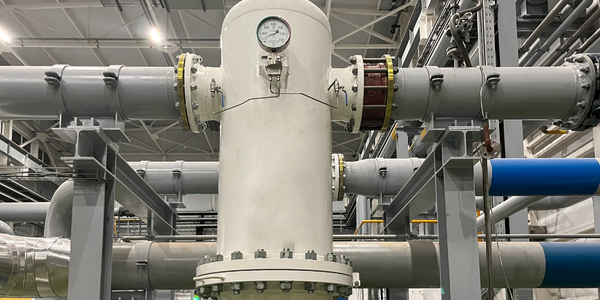技术
- 应用基础设施与中间件 - 事件驱动型应用
- 功能应用 - 企业资源规划系统 (ERP)
适用行业
- 金融与保险
- 包装
适用功能
- 采购
- 销售与市场营销
用例
- 库存管理
- 租赁金融自动化
服务
- 云规划/设计/实施服务
- 系统集成
关于客户
Groupe Roullier 是一家总部位于法国的全球农业企业集团。该公司在全球拥有 130 多家子公司,每个子公司都有自己的 ERP 系统。母公司 Compagnie Financière et de Participations Roullier (CFPR) 负责监督整个集团的技术项目,并为其子公司提供临时 IT 支持。该公司在高度监管的环境中运营,需要遵守法国的《透明度、反腐败和经济现代化法案》(Sapin II 法案)等严格法规。
挑战
Groupe Roullier 是一家全球农业企业集团,在管理其 130 多家子公司(每个子公司都有自己的 ERP 系统)的数据方面面临着重大挑战。这造成了高度的复杂性,特别是在开发集团范围或多实体应用程序时。该公司需要一个解决方案来降低其应用程序开发过程的复杂性。此外,该集团还必须遵守法国的《透明度、反腐败和经济现代化法案》(Sapin II 法案),该法案要求员工超过 500 名且年销售额超过 1 亿欧元的公司披露其在全球范围内合作的所有第三方。自动化审批流程意味着将应用程序与集团子公司的不同 ERP 相连接,从而增加了另一层复杂性。
解决方案
为了应对这些挑战,Groupe Roullier 的 IT 部门部署了业务流程管理 (BPM) 系统 Nintex K2 Cloud,以打破子公司不同信息系统之间的孤岛并实现业务流程自动化。经过竞标过程后,Groupe Roullier 选择了 Nintex K2 Five,因为它能够支持复杂的流程并通过 API 与各种 ERP 接口。该集团还利用 Nintex 的数字服务合作伙伴 Orange Business Services 开发复杂的 Roullier 合规平台 (RCP) 应用程序。然而,部署后的基础设施限制导致应用程序持续出现问题。为了解决这些问题,Nintex 的法国团队建议将应用程序和工作流程迁移到 Nintex K2 Cloud。迁移过程于 2021 年 3 月开始,首先是为以前手动管理一切的实体提供原材料采购、销售和物流应用程序。
运营影响
数量效益

Case Study missing?
Start adding your own!
Register with your work email and create a new case study profile for your business.
相关案例.

Case Study
IoT Data Analytics Case Study - Packaging Films Manufacturer
The company manufactures packaging films on made to order or configure to order basis. Every order has a different set of requirements from the product characteristics perspective and hence requires machine’s settings to be adjusted accordingly. If the film quality does not meet the required standards, the degraded quality impacts customer delivery causes customer dissatisfaction and results in lower margins. The biggest challenge was to identify the real root cause and devise a remedy for that.

Case Study
Zenon the Ideal Basis for An Ergonomic HMI
KHS develops and produces machines and equipment for filling and packaging in the drinks industry. Because drinks manufacturing, filling and packaging consist of a number of highly complex processes, the user-friendly and intuitive operation of equipment is increasingly gaining in significance. In order to design these processes as simple as possible for the user, KHS decided to introduce a uniform, transparent and standardized solution to the company. The HMI interface should meet the requirement for people with different qualifications and enable them to work on a standard platform.

Case Study
Real-time In-vehicle Monitoring
The telematic solution provides this vital premium-adjusting information. The solution also helps detect and deter vehicle or trailer theft – as soon as a theft occurs, monitoring personnel can alert the appropriate authorities, providing an exact location.“With more and more insurance companies and major fleet operators interested in monitoring driver behaviour on the grounds of road safety, efficient logistics and costs, the market for this type of device and associated e-business services is growing rapidly within Italy and the rest of Europe,” says Franco.“The insurance companies are especially interested in the pay-per-use and pay-as-you-drive applications while other organisations employ the technology for road user charging.”“One million vehicles in Italy currently carry such devices and forecasts indicate that the European market will increase tenfold by 2014.However, for our technology to work effectively, we needed a highly reliable wireless data network to carry the information between the vehicles and monitoring stations.”

Case Study
Safety First with Folksam
The competitiveness of the car insurance market is driving UBI growth as a means for insurance companies to differentiate their customer propositions as well as improving operational efficiency. An insurance model - usage-based insurance ("UBI") - offers possibilities for insurers to do more efficient market segmentation and accurate risk assessment and pricing. Insurers require an IoT solution for the purpose of data collection and performance analysis

Case Study
Sparks Dynamics Assists Atlas Container Secure a $15,000 BGE Energy Rebate
The ReMASTER Compressed Air Monitoring system was installed in 2015. This system is capable of monitoring compressed air system parameters on a continuous basis and transferring that information to a cloud server which can be accessed by Atlas Container personnel, Industrial Diagnostics and Sparks Dynamics. This information was collected into a database which can be exported to an Excel spreadsheet or displayed graphically using Sparks Dynamics ViewMaster Software. The average annual compressed air electricity expense was estimated to be approximately $116,000. This is based on an incremental $/KWh electric rate of $.091 per KWh and an estimated compressed air energy consumption of 1,279,200 KWH. The implementation phase of Energy Conservation Measures (ECMs) for the Compressed Air System included: • Identification and repair of compressed air leaks • Understanding of compressed air usage per manufacturing machine and installation of shut off valves when the machines are no longer in production mode • Identification of misapplications of compressed air to include blow offs, venturis, and cooling scenarios • Understand system pressure requirements and potential installation of point of use pressure regulation.

Case Study
Smooth Transition to Energy Savings
The building was equipped with four end-of-life Trane water cooled chillers, located in the basement. Johnson Controls installed four York water cooled centrifugal chillers with unit mounted variable speed drives and a total installed cooling capacity of 6,8 MW. Each chiller has a capacity of 1,6 MW (variable to 1.9MW depending upon condenser water temperatures). Johnson Controls needed to design the equipment in such way that it would fit the dimensional constraints of the existing plant area and plant access route but also the specific performance requirements of the client. Morgan Stanley required the chiller plant to match the building load profile, turn down to match the low load requirement when needed and provide an improvement in the Energy Efficiency Ratio across the entire operating range. Other requirements were a reduction in the chiller noise level to improve the working environment in the plant room and a wide operating envelope coupled with intelligent controls to allow possible variation in both flow rate and temperature. The latter was needed to leverage increased capacity from a reduced number of machines during the different installation phases and allow future enhancement to a variable primary flow system.







